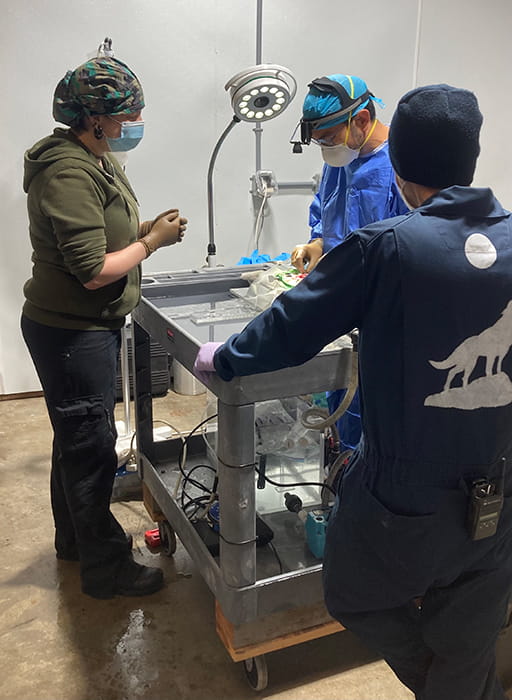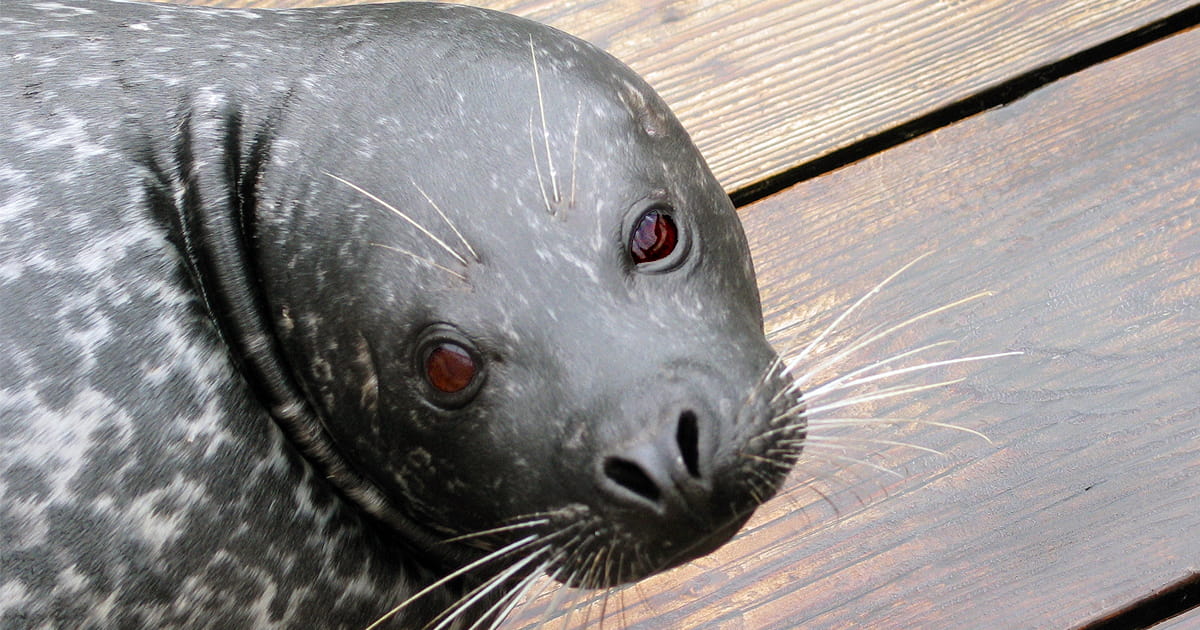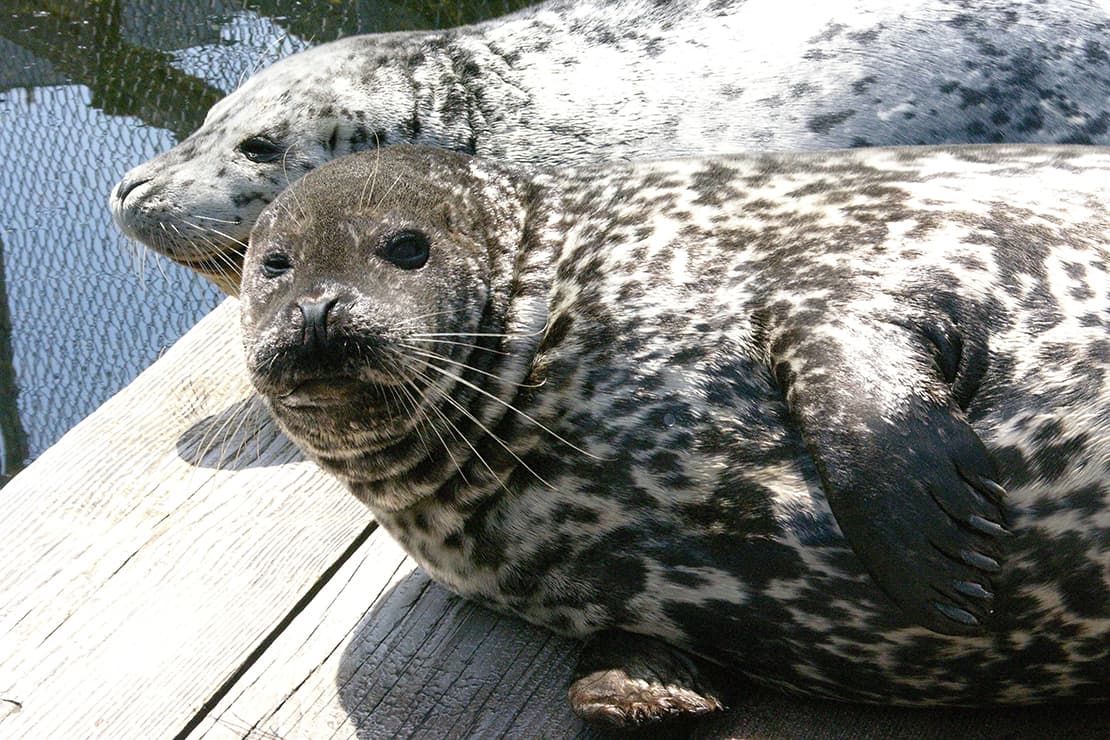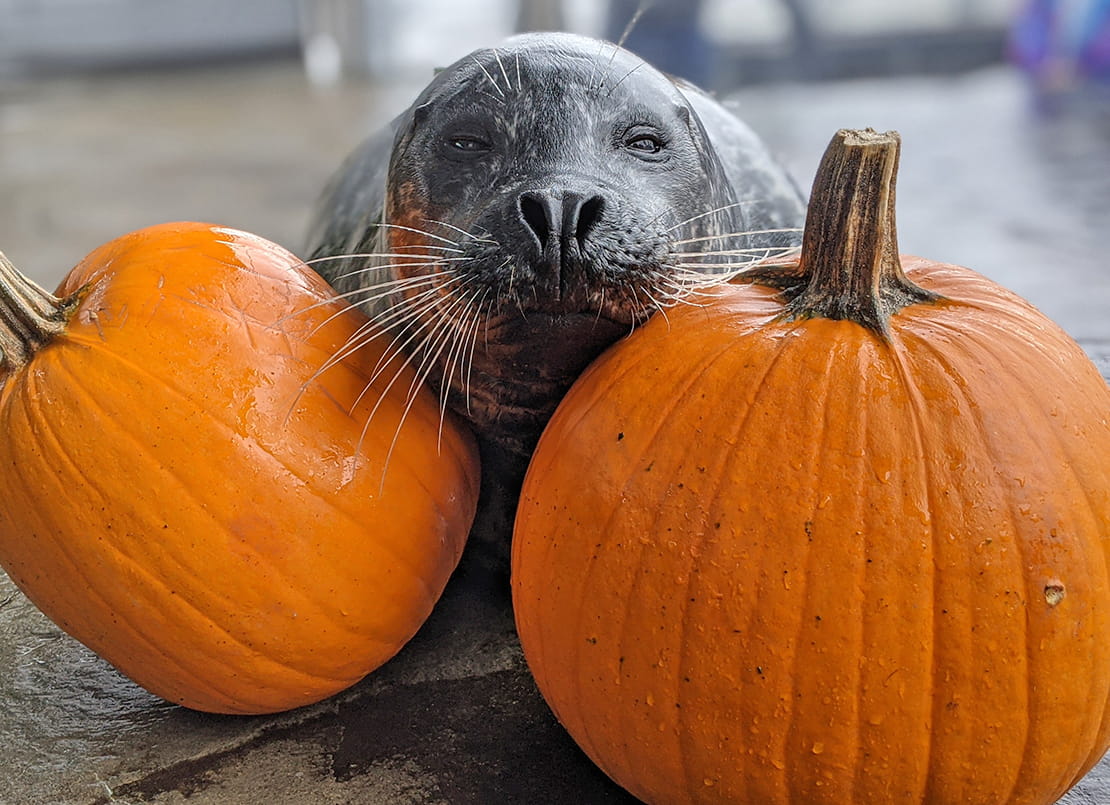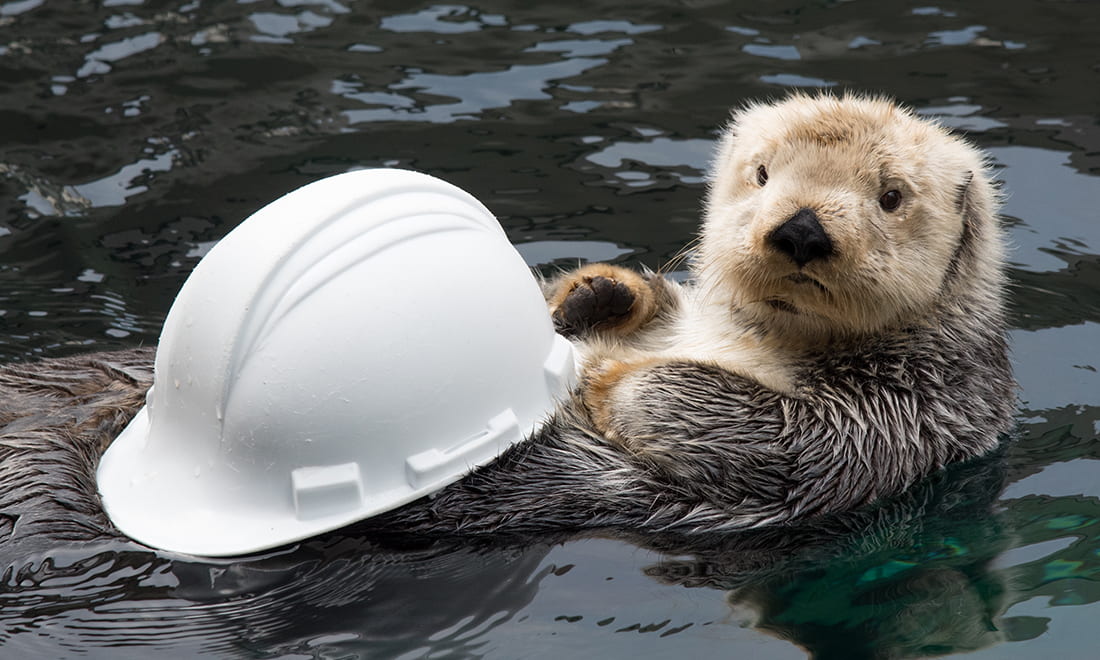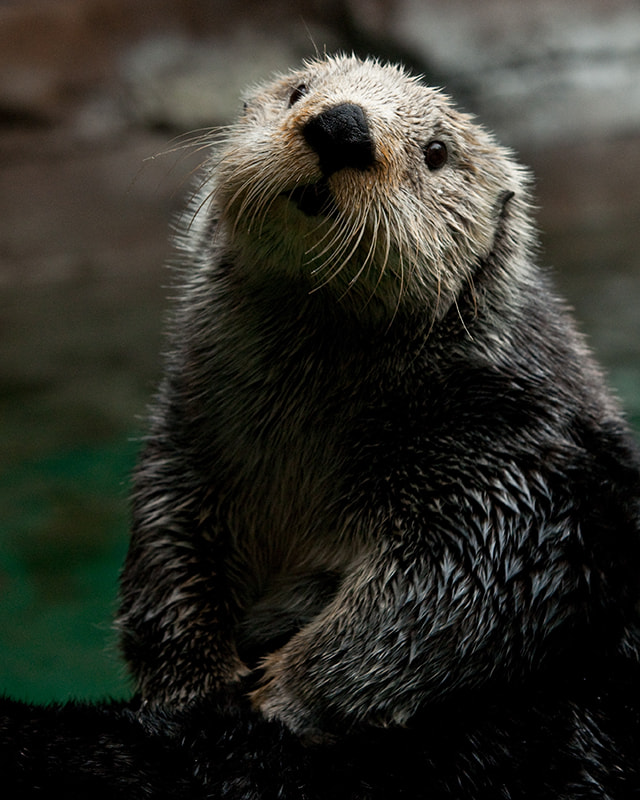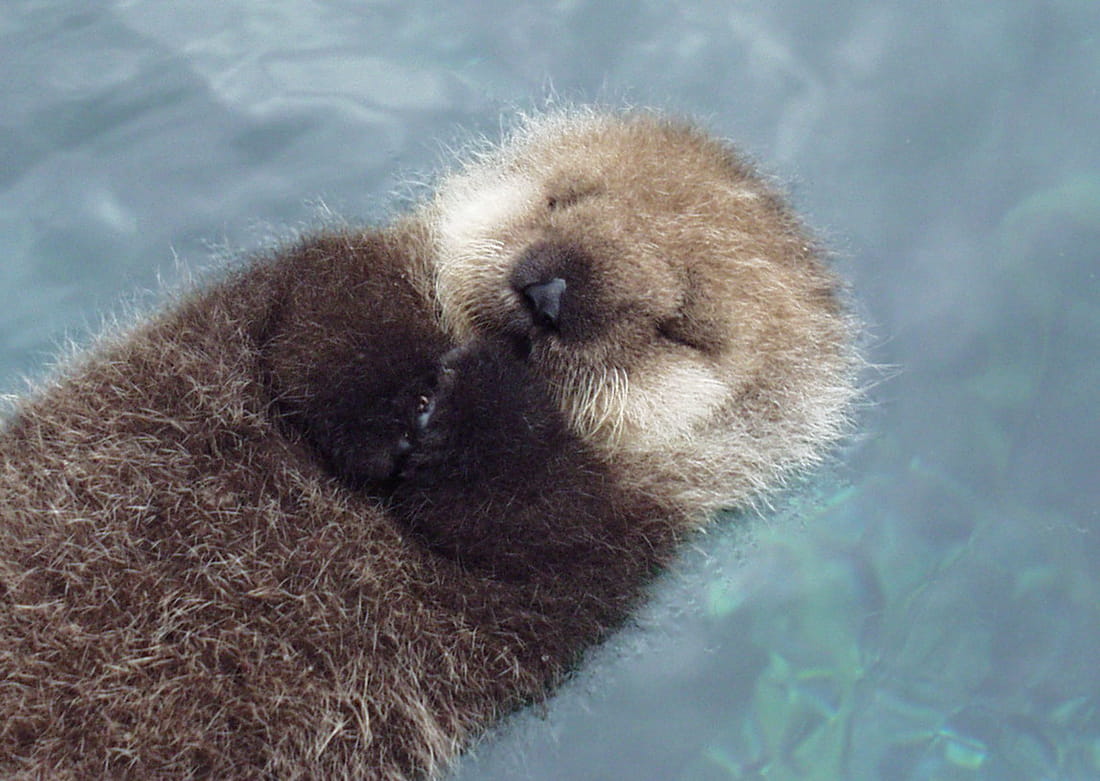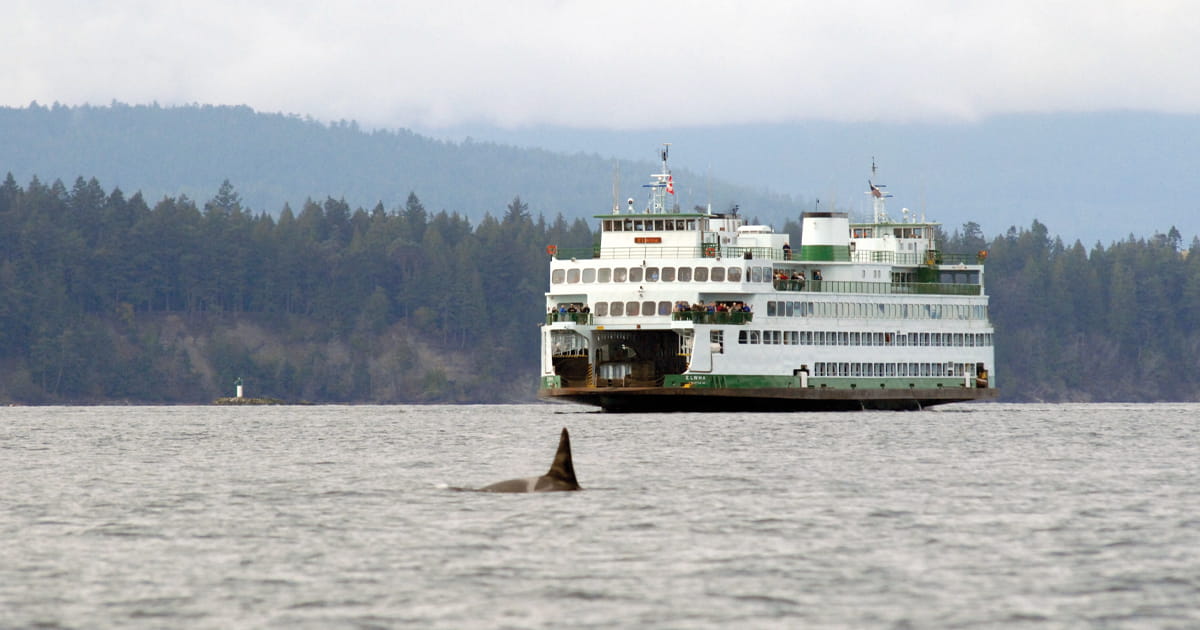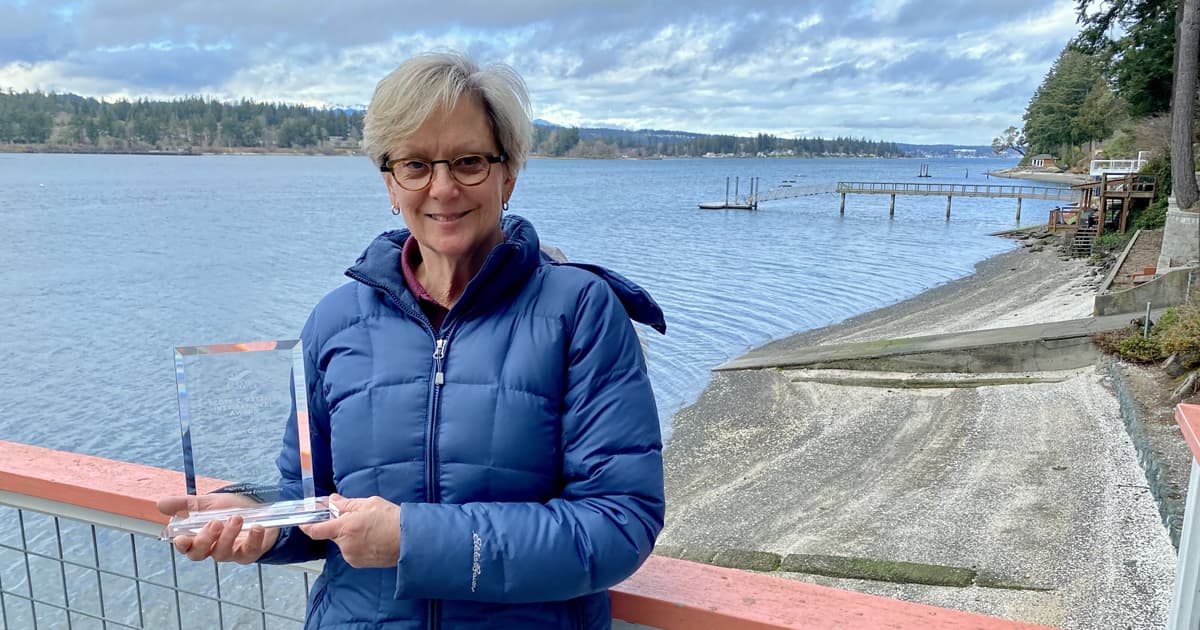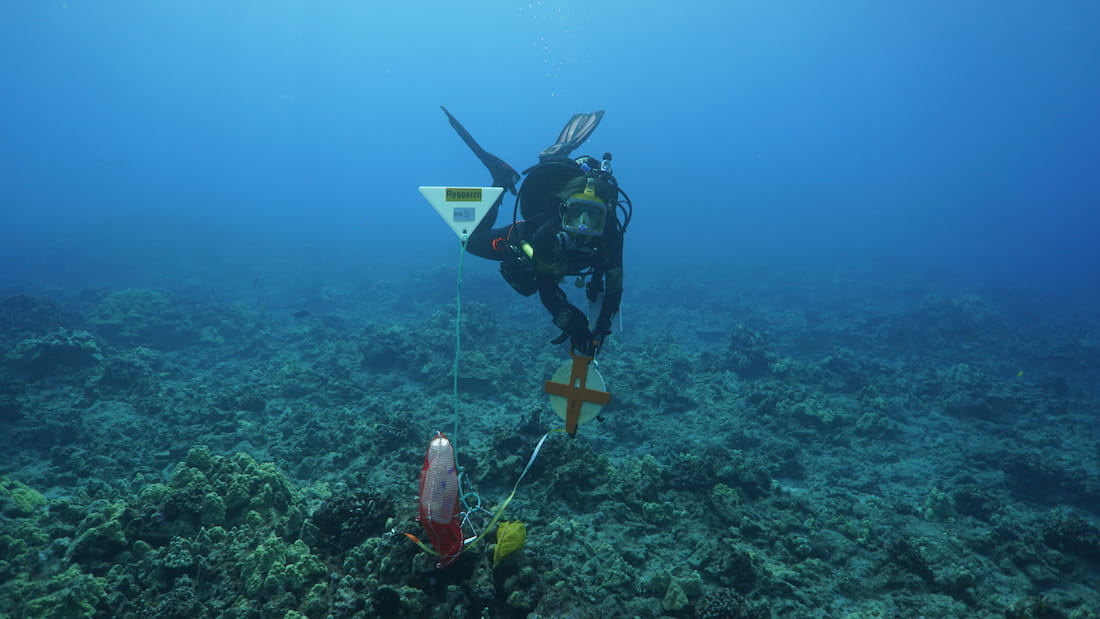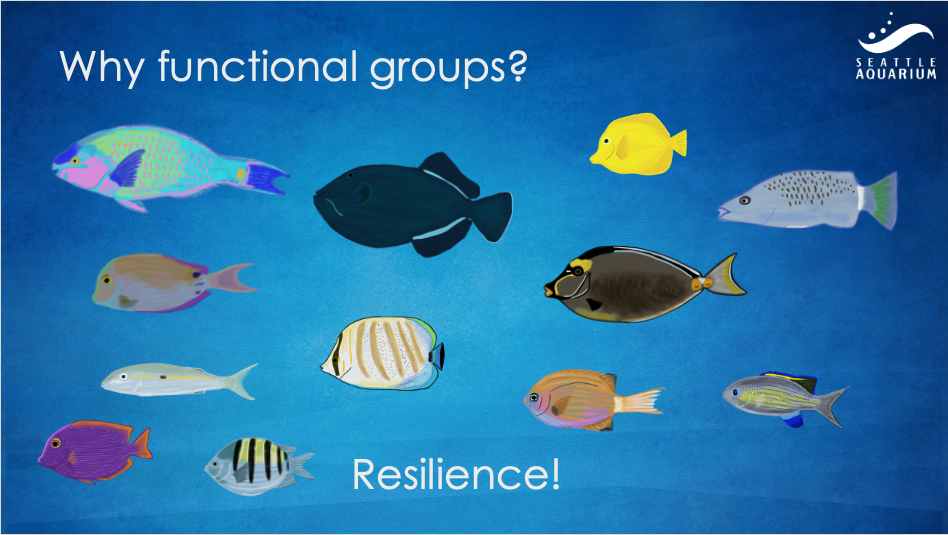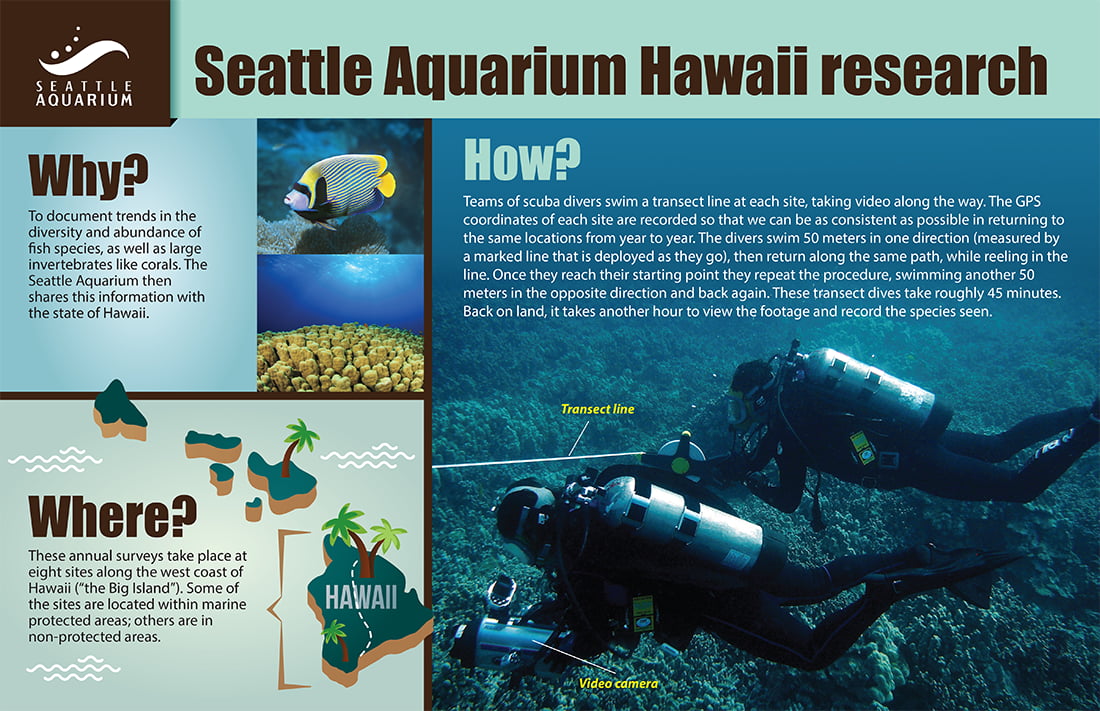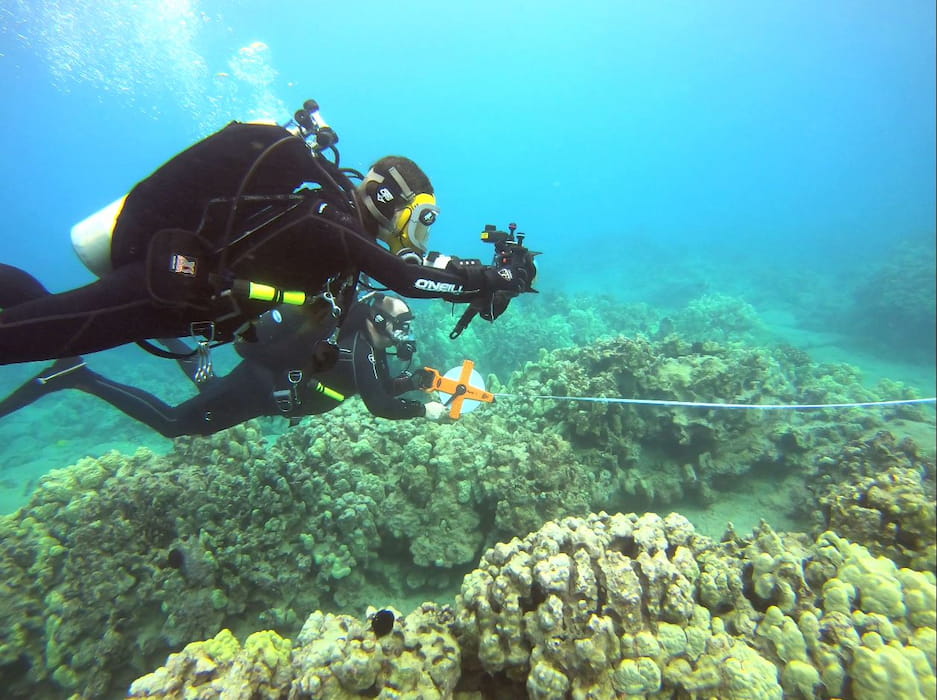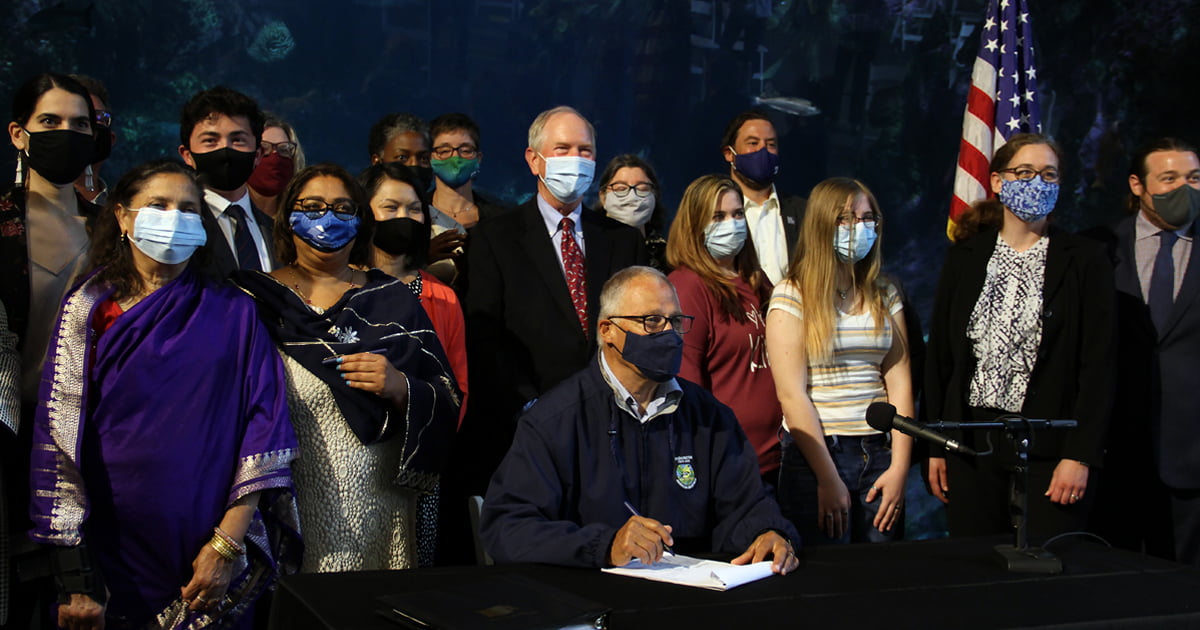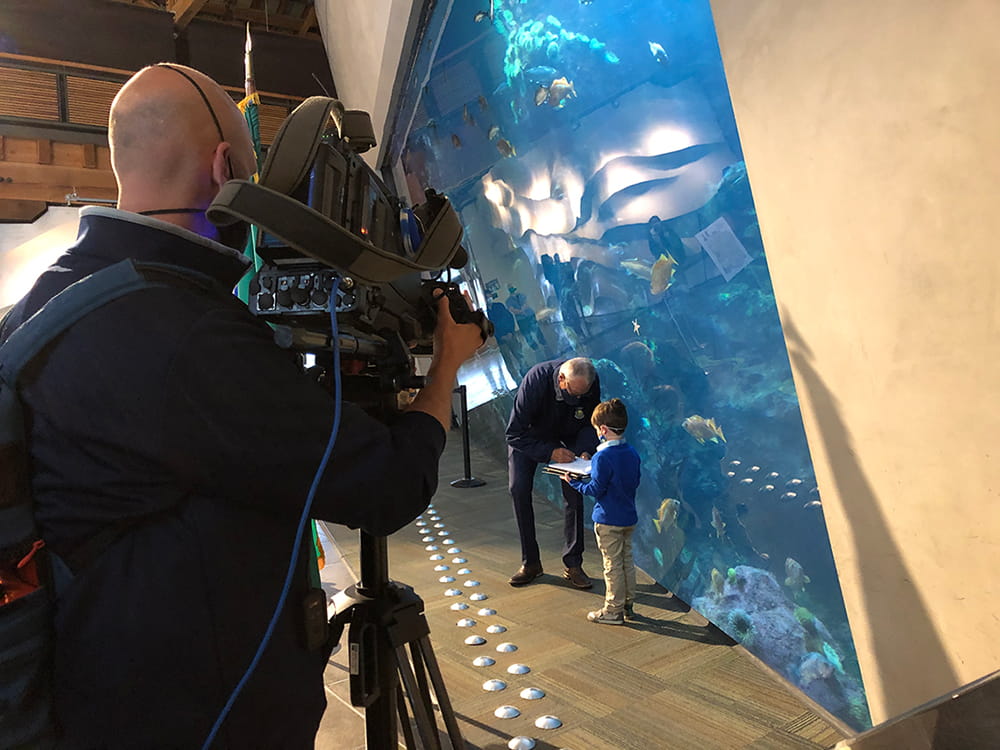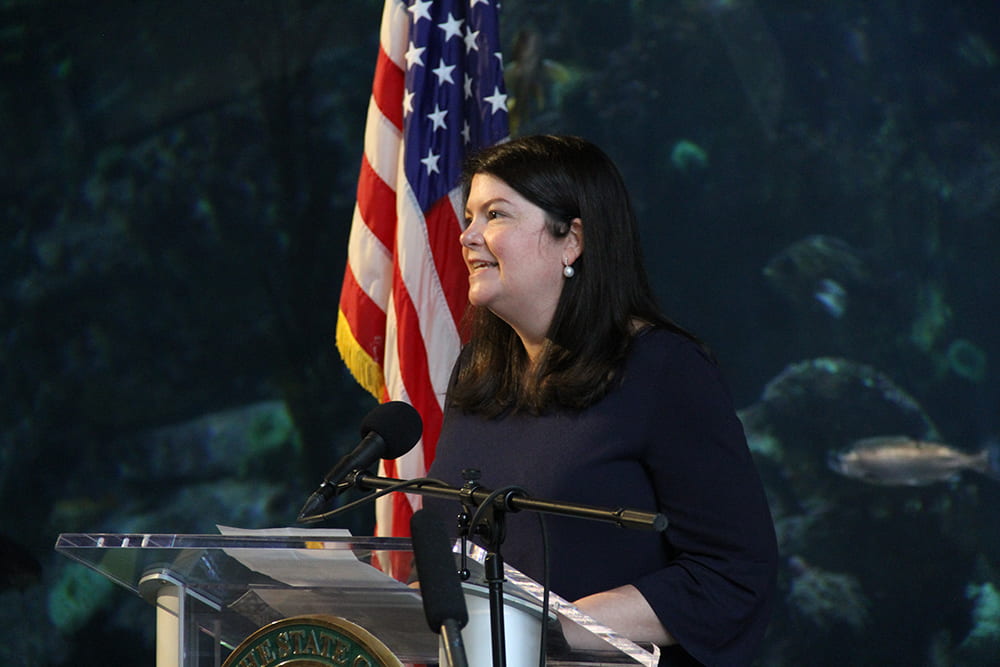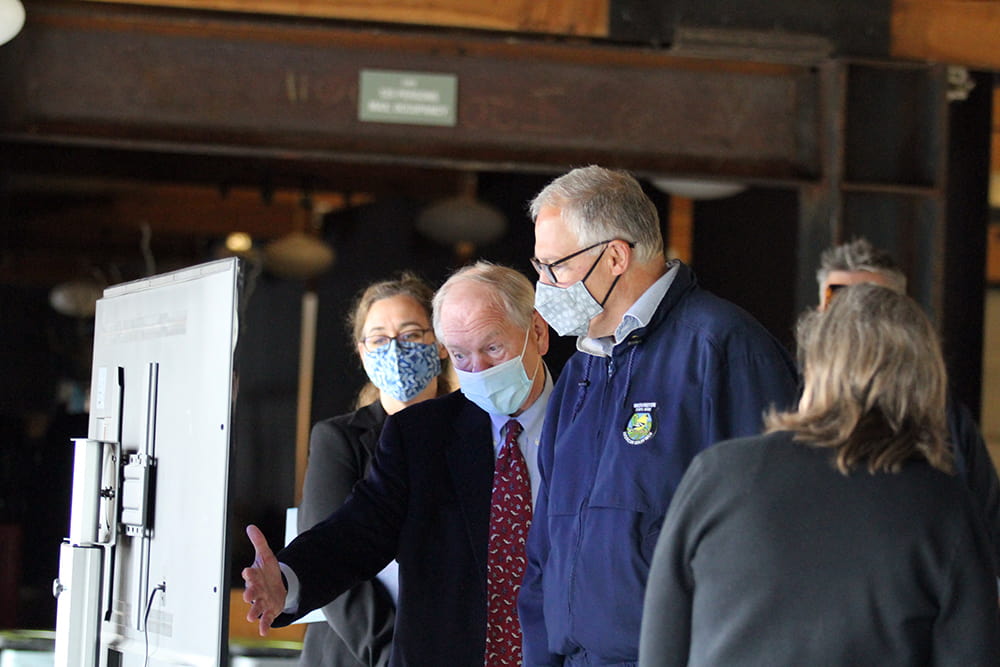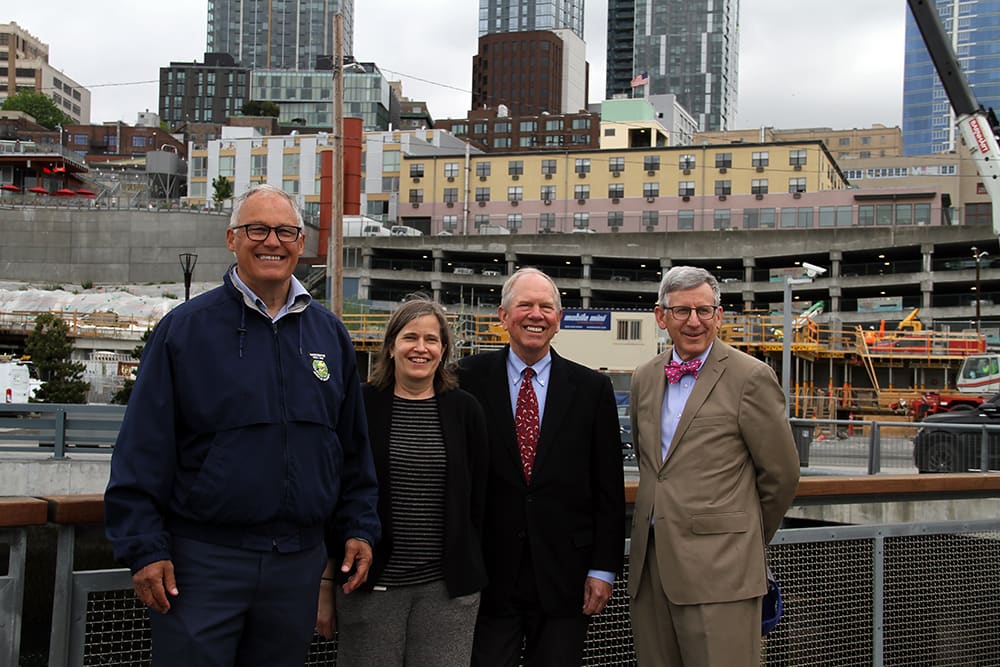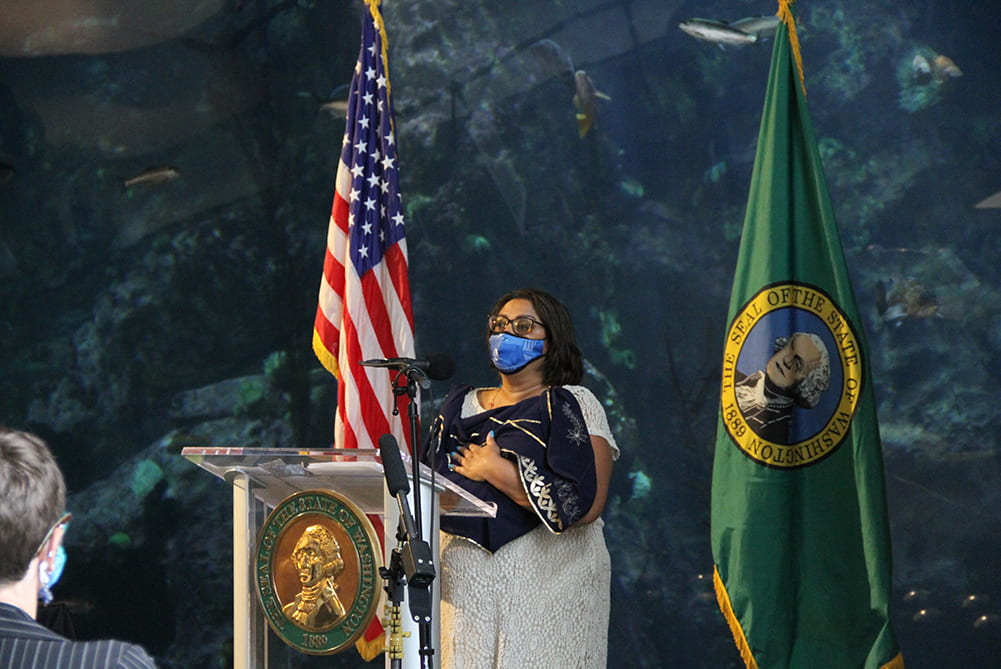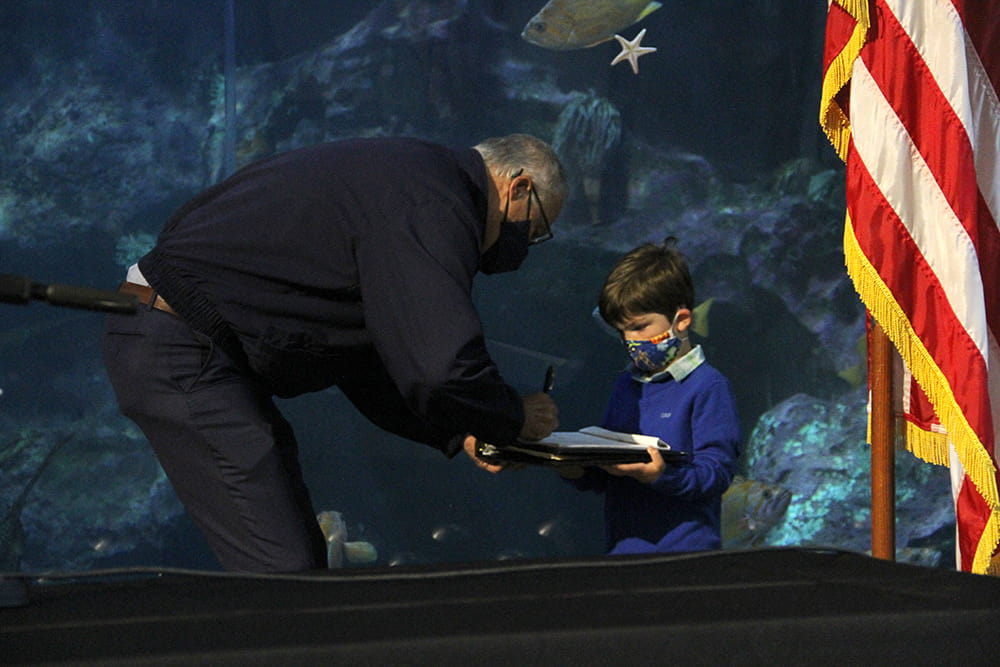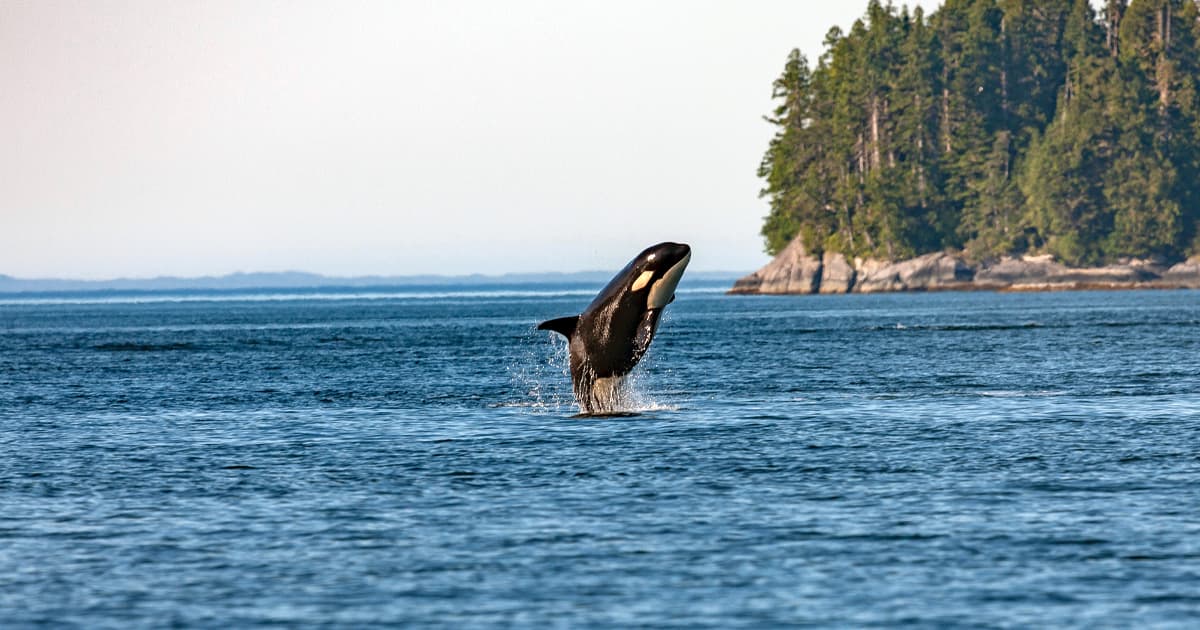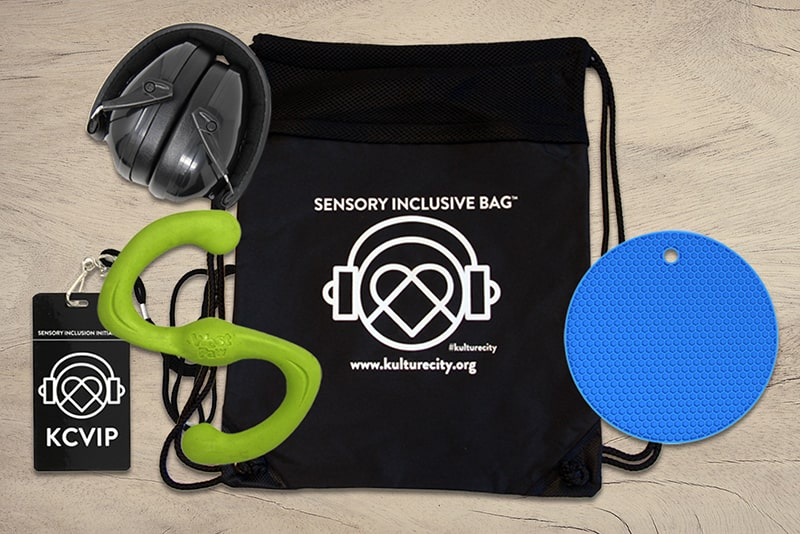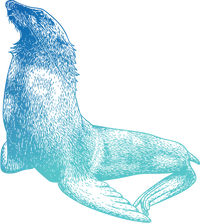Specialist surgeon visits Aquarium to help a red Irish lord
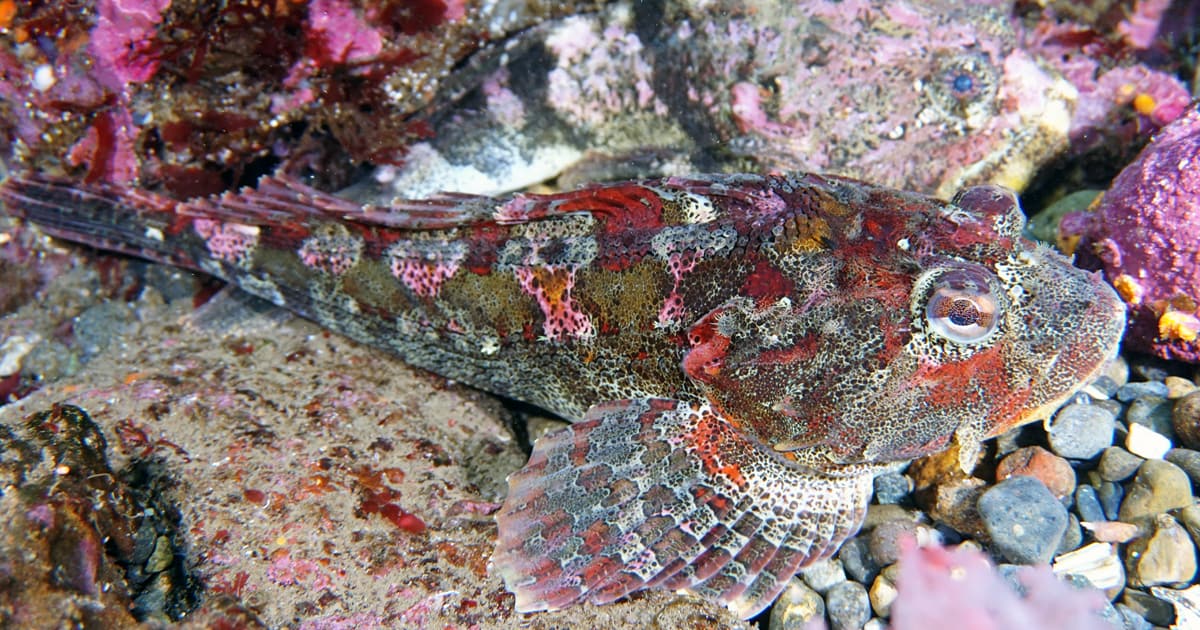
An egg-bound red Irish lord (Hemilepidotus hemilepidotus) at the Seattle Aquarium needed surgery, so a board-certified surgeon from Animal Surgical and Orthopedic Clinic (ASOC) performed the necessary procedure. Senior Veterinarian Dr. Caitlin Hadfield and Curator of Fish & Invertebrates Tim Carpenter here at the Aquarium explain more:
Q: What can you tell us about this species?
Tim: Red Irish lords are part of the sculpin family. They tend to rest on the bottom of shallow waters, down to depths of 1,500 feet. They’re common from the Bering Sea, near Alaska, to Washington, and are rarer south to central California. These fish are highly camouflaged and often overlooked by divers. Given that this species is not a common commercial or recreational fishing target, complete biological data on the species is not well-published. Based on limited fishing and other data gathered by the state of Washington, they can grow up to 20 inches long and 2.45 pounds in weight. Their maximum age is at least 6 years old.
Q: What does it mean for a fish to be egg bound?
Tim: Egg binding occurs when a female produces eggs but is not able to release them. This can lead to a buildup of eggs with each successive “clutch”, and the eggs become increasingly abnormal over time. There are many possible causes; we’re not sure why this species gets egg bound.

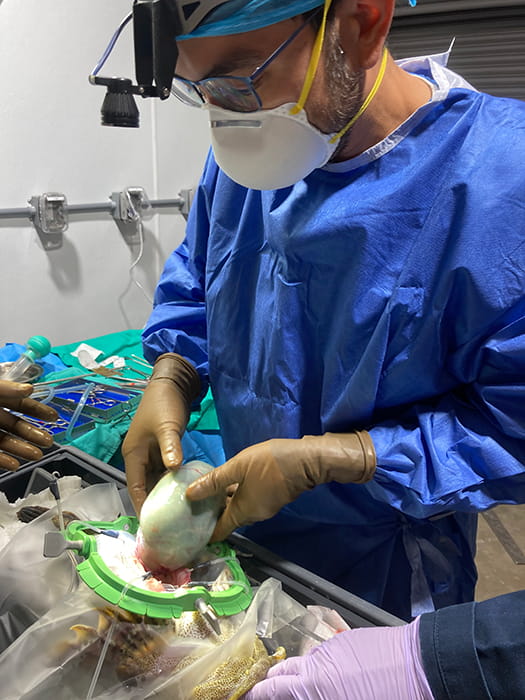
Q: Why was a board-certified surgeon needed to assist on a surgery for this red Irish lord fish’s case?
Dr. Hadfield: Aquarium and zoo veterinarians frequently reach out to specialists when we think it’s in an animal’s best interest. In this case, the anatomy is the main reason.
In fish like koi and salmon, the ovaries are two separate structures that sit loosely within a thin membrane and are easy to remove if they cause issues. In Irish lords, the two ovaries combine at the back, making them U-shaped, and that caudal aspect (i.e., near the tail) is tightly adhered to the body wall and the colon. Combined with that, these abnormal ovaries are very large—about 50% of the fish’s body weight—and the ovarian wall holding in all the little eggs is fragile.
These factors make this a particularly difficult surgery. We had tried environmental changes and hormones to induce egg laying but without success, and this surgery was needed to save the fish’s life. Dr. Alex Aguila, a board-certified surgeon from ASOC, and his surgical assistant, Sarah Gagliano, have extensive experience with difficult surgeries.
Alex was able to remove all the ovarian tissue, which is great news. The surgery is challenging and it is common to have to leave some of the ovarian tissue; this can regrow and cause more issues later on. Dr Aguila was also fast! This meant we were able to reduce the total anesthetic time to about 90 minutes, which also helps improve the long-term prognosis for the fish. And this was also a great opportunity for us all to work together and learn. The Seattle Aquarium has worked with ASOC for over 30 years, and we look forward to continuing our strong relationship well into the future.
Q: How does surgery happen on a fish?
Dr. Hadfield: To anesthetize a fish like this, we use a drug that is dissolved in the water. We keep that medicated water flowing over the fish’s gills through the surgery using a pump that moves the water through a big loop while we monitor the condition of the water. This lets us keep the fish’s belly out of water for the surgery. We also provide pain relief, similar to what you or your pet would receive, including anti-inflammatories, opioids, and local anesthesia around the surgery site. Once the fish is pre-medicated and on our surgical system, the surgeon can drape the site and get started. While there are differences in anatomy (like a lack of fur!), how surgery is done is similar to dogs and cats, including using the same types of sutures (stitches) to close up the body wall and skin.
Q: What happens next for the care of this red Irish lord?
Dr. Hadfield: The surgery was about a month ago, and the fish is doing great. She is eating again and looking like a healthy red Irish lord. She will get some more recheck exams and then move back to the Window on Washington Waters habitat. She has a small transponder now (just like your dog or cat), so we will be able to monitor her over time to see how she does.
Q: What are other examples of when specialists visit the Aquarium to help the animals in our care?
Dr. Hadfield: We are lucky enough to have a large support network of specialists in the zoo and aquarium field as well as in the private sector, including anesthesiologists, cardiologists, radiologists, ophthalmologists, and oncologists (lots of -ologists, really!). These specialists routinely donate their time and expertise to help improve the health and welfare of the animals under our care. One of the things that I appreciate most about this field is that we all want to learn and help each other out.
Q: When has the Aquarium shared our expertise in the community or with peer institutions and other organizations or efforts?
Dr. Hadfield: This is a hugely collaborative field, and we each try to help where we can. People often reach out to us to discuss challenges they may be having with species that we have under our care, as well as programs that we are particularly well known for, such as our animal welfare assessments and conservation programs.
